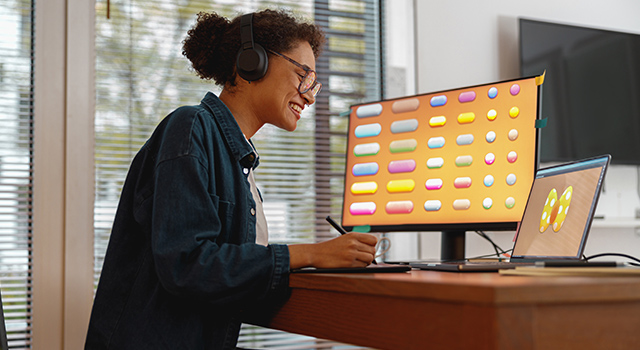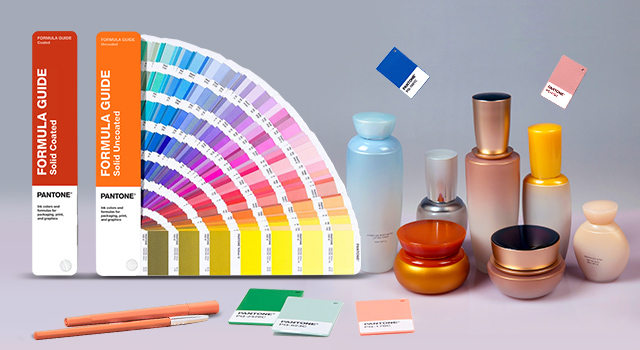In the creation of art, the artist inevitably inserts themselves into the work, shaping pictorial representations in their likeness to some degree. Our current era of selfie-culture is an example of this, where we seek to inject and project ourselves into our environments, social activities, objects, and places. Identity is tied into the impressions we make and leave behind, in work, social media, and life.
Likewise, bias isn’t entirely removed from designing art either, even when done on behalf of another individual or company. This phenomenon is often part of the artistic process and can lead to creative, imaginative, and intelligent inspiration and output.
Cognitive Bias and Confirmation Bias are psychological occurrences that influence both the creative process and the results, something that can affect graphic designers. It appears in the initial stages of concept development during designing and can impact the entire procedure, including how designers understand users.
Following a predetermined design guide, however, can be detrimental to the artistic process and method of thinking, constraining creativity. Designers have to be aware of bias and consider that to produce the best possible results: a marriage between art, technique, and business goals.
Bias isn’t necessarily a weakness as it’s often perceived in social or world situations; it can be a source of strength that enables graphic designers to improve the user experience and draw from a rich contextual foundation.
Bias and Output Variations
Though Cognitive bias is occasionally described as an irrational form of judgment, it stems from our individual societal and social subjectivity. Assumptions are made about situations and people based on these inherent perceptions.
Confirmation bias is the natural, latent urge to look for and decipher evidence that confirms existing convictions and beliefs. It’s a “leap to conclusions” type of notion that’s caused by intuitive behaviors.
In graphics design, these biases occur at varying levels in the conceptual and design process, including the preparation phase where scenario writing takes place, amid testing, and after testing during syntheses.
This causes some unique variations in output depending on the type of bias:
- Sampling Bias: Certain users are intentionally excluded from participating in the research, which can lead to tunnel visioning when designing. The intended target audience narrows in this instance, and designers might not be effectively reaching everyone.
- Wording Bias: An answer is already implied in the questions that are being asked, likely arising from the prompting found in the question wording or structure. This can lead to a lack of neutrality in design because the previous experience is coloring the way the question is interpreted.
- Anchoring Effect: Makes it difficult to weigh all available options because of a focus on the first form of information offered during the decision-making process. All other information that follows is weighed against this first perception we form, creating expectations.
- Hawthorne Effect: Behaviors are inadvertently adapted according to the level of awareness of being observed by someone else. A slower process with less artistic freedom can result in “cookie-cutter” design, which is often due to the desire to minimize potential embarrassment or negative feedback.
- Social Desirability Effect: Participants in the research process provide answers that are typically viewed as socially acceptable or politically correct rather than offering an honest opinion based on their beliefs. This skews responses to a widely accepted “norm” instead of directing design processes towards a result that can offer true value, however controversial or niche that may be.
- Observer-Expectancy Effect: Occurs when the designer is influencing research based on his or her philosophy, demeanor, and point of view. Non-neutral body language and verbal cues used during surveys and coerce a certain type of user response.
Addressing Biases in Design Research
Information received during the research stages might be abbreviated if bias has entered the equation. Many designers choose to use a teamwork or feedback approach when addressing biases to help identify them as they emerge, and to disprove any hypothesis where bias could negatively impact the user experience in design.
Other ways to acknowledge bias during design conception:
- Minimize any expectations or existing notions about an idea or person.
- Remain passive and quiet while conducting user research.
- Ask more in-depth questions about a user’s history, behavior, and situation.
- Note any biases that arise during research for easier identification in the future.
The tenuous nature of conducting interviews and user research requires a level of self- awareness so that the full advantages of this investigative action can be uncovered and applied to the graphic design processes. This ensures design goals can be accomplished and any potential issues can be effectively addressed.
Creative Constraints in Design
Following a design guide, while helpful depending on the circumstance, can be problematic. The differences in visualization that arises while adhering to a specific design requirement, or following a design guideline, can have undesired outcomes.
The user experience should be enjoyable, usable, repeatable, and functional, incorporating the look and feel in the design. Integrating graphic design with business objectives only occurs through careful research, testing, and refinement. While the scientific methodology is a foundation for design, there needs to be room for human-centric creativity.
Designers need to have the creative license to allow their design to evolve through the appropriate artistic stages to problem solve and produce meaningful, innovative, and iconic results without relying on the often overly relied upon conventional, limiting rules of design.
Honing the Aesthetic and Scientific Design Process
Artwork Adobe (AWA) provides an environment conducive to creativity, encouraging artistic expression while maintaining a process of feedback exchange and quality control that injects objectivity. This harmony has enabled the artistic team at AWA to produce beautifully rendered, technological and scientifically driven work for diverse design purposes across a spectrum of industries. As creative outsourcing specialists, AWA is positioned to help companies captivate customers and audiences with customized graphic designs that reflect their unique business message.
– ArtworkAbode




